| Arese | |
|---|---|
| Noble family | |
 | |
| Country | Italy |
| Earlier spellings | Arexio, Aresi, Arisiis |
| Titles |
|
| Style(s) | Don or Donna |
| Cadet branches | |
The Arese (or Arexio,Aresi, or deArisiis in ancient form) are a prominent family of the Milanese nobility.
| Arese | |
|---|---|
| Noble family | |
 | |
| Country | Italy |
| Earlier spellings | Arexio, Aresi, Arisiis |
| Titles |
|
| Style(s) | Don or Donna |
| Cadet branches | |
The Arese (or Arexio,Aresi, or deArisiis in ancient form) are a prominent family of the Milanese nobility.
The family originates in the comune of Arese on the outskirts of Milan, where they were feudal lords since at least the 11th century as the Lombard Capitanei of Arese (Cataniis d'Arexio). Capitaneo was a hereditary title of milites particular to medieval Lombardy, a captain of knights and autonomous vassal of the Archishop of Milan, who from the 11th century largely governed the city and was often chosen among the capitanei. [1] It is likely that between the 12th and 13th centuries, in the years of the Lombard League, the Arese moved within city walls, along with other surrounding capitanei building political legitimacy in the Milanese free commune through ecclesiastical benefice of the Ambrosian church, while defending it from the Holy Roman Emperor. [2] Following establishment of the Milanese signoria in 1259, the Arese were included in Ottone Visconti's 1277 Matricula nobilium familiarum Mediolani as one of the most ancient patrician citizens of Milan. [3]
During the late Middle Ages and early Renaissance, the Arese were notable as "nobiltà di toga" ("Nobles of the Robe"), aristocracy whose rank derived from civic stewardship of the commune, holding key judicial or administrative posts of the city-state during the signoria of the Visconti, Dukes of Milan, and the Ambrosian Republic. [4] Giacomo Arese (Capitan d'Aresio), the first of the current line, was a member of the Decurion Council in 1331 and a juridical consul of the Ecclesiastical Forum under Azzone Visconti. Ambrogio Arese was podestà of Voghera from 1371 under Galeazzo II Visconti and a member of the Decurion Council in 1388, notary of the Office of XII Provisioners, and chancellor of Milan under Gian Galeazzo Visconti. [5] [6] Andreolo Arese (de Arisiis), son of Antoniolo, was Gian Galeazzo Visconti's secretary from 1377 and his roaming ambassador towards becoming the first Duke of Milan in 1395. He represented Gian Galeazzo in France to negotiate and then ratify marriage between his daughter Valentina Visconti and Louis I, Duke of Orléans in 1388. [7] [8]
At the dawn of the Renaissance, during the violent reign of young Gian Maria Visconti, Cristoforo Arese, son of Ambrogio, continued as ambassador to the French court of Charles VI from 1407. [9] [10] His brothers Giacomo Arese was a collegiate jurisconsult and sindicatore ducale from 1406 and Martino Arese was made Gentiluomo Ducale in 1409 for facilitating transition of power to Filippo Maria Visconti. He was appointed to the last Visconti Duke's Decurion Council in 1427. [11] During the early rule of the Sforza, from 1450, the family appears to recede from prominence in the administration of the Duchy of Milan.
The family became particularly influential in the years following the death of Ludovico Sforza, as the embattled Francesco II Sforza ceded Milan to Spanish Habsburg rule (1556–1707). In 1538 Bartolomeo II Arese, il Vecchio (1508–1562) was Treasurer-General for the Duchy of Milan under Francesco II Sforza. He acquired lordship of the Pieve of Seveso under Charles V, Holy Roman Emperor, with heirs consolidating power under Philip II, King of Spain through close alliances with the Archbishops of Milan Saint Charles Borromeo and Gaspare Visconti. [12] Marco Antonio III Arese (1550–1610) was podestà of Cremona and Giovanni Battista Arese was governor of Rimini under Pius IV. [13] [14] Giulio I Arese (1560–1627) was a founding member of the Accademia degli Inquieti in Pavia in 1594 and president of the Senate of Milan, the Duchy's highest governing body, from 1619 under Phillip III. [15]
Bartolomeo III Arese (1590–1674) was elected president of the Senate of Milan from 1660 after leading the suppression of French conspiracy in Northern Italy for Philip IV of Spain during the Thirty Years' War and the Great Plague of Milan, effectively becoming the Duchy's ruler. His vast political influence and artistic patronage while leading the Milanese domains under Charles II and Philip V and as president of the Council of Italy, marks the height of the Arese's jurisdiction. [16] [17] [18] In the same period, Paolo Cesare Arese (1574–1644), philosopher, theologian, and Bishop of Tortona, authored Della tribolatione e suoi rimedi (1624) and Imprese Sacre (1621) in which he supports the Ptolemaic System. [19] [20] [21] Girolamo Arese (1597–1611) was one of fourteen Martyrs of Prague, beatified in 2012. [22]
In the years leading up to the War of the Spanish Succession, Marco II Arese (d. 1690) was a Milanese senator and regent of the Supreme Council of Italy in Madrid between 1680 and 1690. Giovanni Francesco Arese (1642–1715) was a general and governor of Mortara, Finale, Alessandria, and Cremona. He formed a significant collection of paintings, praised by Montesquieu in 1728 upon his visit to Palazzo Arese in Milan. [23] [24]
Following the War of the Spanish Succession, the Arese were prominent figures in Milanese cultural life, the establishment of the Cisalpine Republic, the Napoleonic Kingdom of Italy, Milanese resistance to the Austrian Empire, and Italian unification. Marco IV Arese Lucini (1770–1825) was an officer of the Cisalpine Republic and the Italian Republic, appointed by Napoleon Bonaparte once making Milan its capital. [25] His wife, Antonietta Fagnani Arese (1778–1847) was a translator of Goethe and is the subject of Ugo Foscolo's ode All'amica risanata. [26] [27] Francesco Teodoro Arese Lucini (1778–1835) was held in the Špilberk Castle and sentenced to death (later commuted) by Francis I, Emperor of Austria for his former alliance with Eugène de Beauharnais, Viceroy of the Napoleonic Kingdom of Italy, and for conspiring to liberate Lombardy and unite it with Piedmont. [28] [29] [30]
Francesco Benedetto Arese Lucini (1805–1881) authored A trip to the prairies and in the interior of North America 1837–1838, a diary of his journey with childhood friend Luis Napoleon Bonaparte, later Napoleone III. [31] He was an Italian Senator and unofficial ambassador of Count Camillo Cavour in Paris during establishment of the Kingdom of Italy, negotiating concession of Nice and Savoy to France in exchange for supporting the Papal States's unification with Italy and for returning lands taken by Napoleon within Italy's current borders, such as the Roman Forum. [32] [33] [34] Achille Arese Lucini (1841–1904) was a military officer and member of the Chamber of Deputies of the Kingdom of Italy. [35]
Franco Arese Lucini, tenth count of Barlassina (1918–1994) was a prominent historian of Milan, president of the Lombardy Historical Society, and Mayor of Osnago. His research archives are held at the University of Insubria in Varese and Como. [36]
The heraldic emblem of the Arese is a pair of wings: a "stemma parlante" (speaking emblem), where in Milanese dialect the word for 'wings' is ar.

The Duchy of Milan was a state in Northern Italy, created in 1395 by Gian Galeazzo Visconti, then the lord of Milan, and a member of the important Visconti family, which had been ruling the city since 1277.
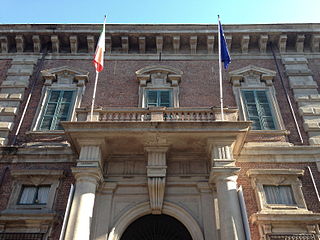
Palazzo Brera or Palazzo di Brera is a monumental palace in Milan, in Lombardy in northern Italy. It was a Jesuit college for two hundred years. It now houses several cultural institutions including the Accademia di Brera, the art academy of the city, and its gallery, the Pinacoteca di Brera; the Orto Botanico di Brera, a botanical garden; an observatory, the Osservatorio Astronomico di Brera; the Istituto Lombardo Accademia di Scienze e Lettere, a learned society; and an important library, the Biblioteca di Brera.

Brianza is a geographical, historical and cultural area of Italy, at the foot of the Alps, in the northwest of Lombardy, between Milan and Lake Como.
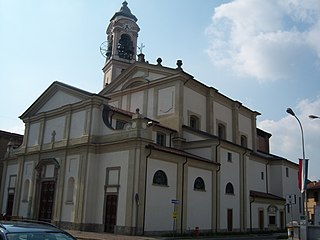
Cesano Maderno is a town and comune of about 39,309 inhabitants in the province of Monza and Brianza, Lombardy, northern Italy. The town borders with the towns of Seveso in the north, in the south with Bovisio-Masciago, in the east with Desio and Seregno, and in the west with Ceriano Laghetto and Cogliate. It received the honorary title of city with a presidential decree on 11 October 1999.

The aristocratic House of Borromeo were merchants in San Miniato around 1300 and became bankers in Milan after 1370. Vitaliano de' Vitaliani, who acquired the name of Borromeo from his uncle Giovanni, became the count of Arona in 1445. His descendants played important roles in the politics of the Duchy of Milan and as cardinals in the Catholic Reformation. In 1916, the head of the family was granted the title Prince of Angera by the King of Italy.

The Palazzo Litta, also known as the Palazzo Arese-Litta, is a Baroque structure in Milan, northern Italy, opposite San Maurizio al Monastero Maggiore, and dating from the period of Spanish rule of the city. In 2018, it served as a cultural center, housing exhibition spaces, offices, and a theater.

Antonio Giacomo Caimi was an Italian portrait painter, author, and professor at the Brera Academy.
The District of Milan was one of the four divisions of the Department of Olona, the province of Milan during the Napoleonic Italian Republic. It received the numeral I and its capital was Milan. Founded on May 13, 1801, it had a population of 217,807 inhabitants.
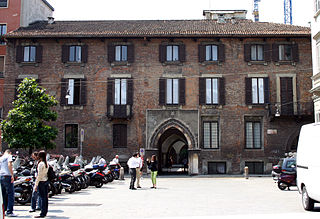
Palazzo Borromeo is a 14th-century building located at piazza Borromeo 12 in Milan, region of Lombardy, Italy. It was built as the home and business headquarters of the Borromeo family, merchant-bankers from Tuscany. Some of the building complex was badly damaged during World War II in Allied bombings of 1943 but was reconstructed and restored to its 15th-century appearance. It contains an important fresco cycle from the 1440s and is one of the finest examples of a Milanese patrician palace from the early Renaissance.

The Rocca Borromeo di Angera, or Rocca d'Angera, also called Borromeo Castle, is a rocca on a hilltop above the town of Angera in the Province of Varese on the southern shores of Lago Maggiore. It has medieval origins and initially belonged to the Milanese archbishop. It passed then to the Visconti of Milan and later to the Borromeos, who are still the owners.

Cascina Sant'Ambrogio is the oldest among the farmhouses in Brugherio, Italy. It is annexed to Saint Ambrose Church from which it takes its name.

Lombard nationalism is a nationalist, but primarily regionalist, movement active primarily in Lombardy, Italy. It seeks more autonomy or even independence from Italy for Lombardy and, possibly, all the lands that are linguistically or historically Lombard. During the 1990s, it was strictly connected with Padanian nationalism.
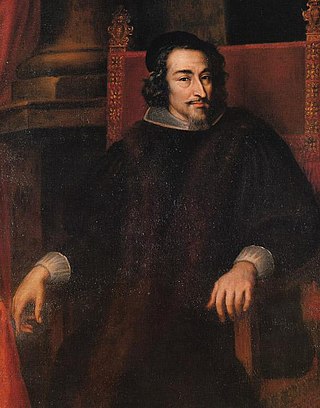
Bartolomeo III Arese count of Castel Lambro born in Milan on 23 October 1590 and died in the same city on 23 September 1674 was an Italian nobleman, politician, and prominent member of the House of Arese.

Palazzo Arese Borromeo is an historic noble palace situated in Cesano Maderno, in the Province of Monza and Brianze, Lombardy, Italy.

Palazzo Arese was a 16th century baroque palace and seat of a branch of the House of Arese in Milan, Italy. It was located adjacent to Casa Fontana Silvestri near the Porta Orientale. The palazzo was demolished in 1943 following damage sustained during the bombing of Milan in World War II.
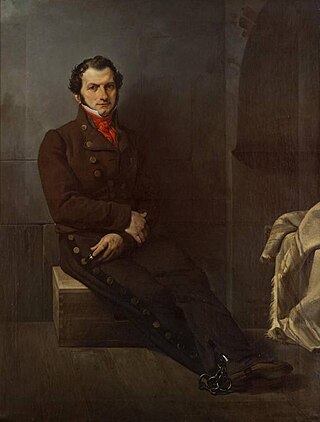
Francesco Teodoro Arese Lucini was a prominent member of the Milanese resistance to the Austrian Empire, early proponent of Italian unification, and member of the House of Arese.
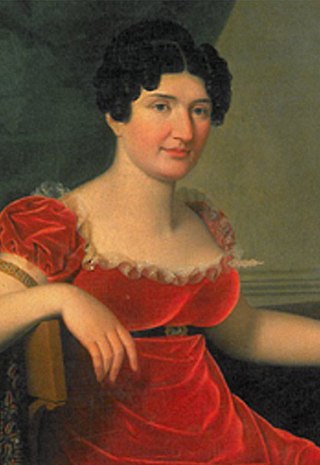
Antonietta Fagnani Arese was an Milanese noble woman, translator of Goethe, and correspondent of Ugo Foscolo.
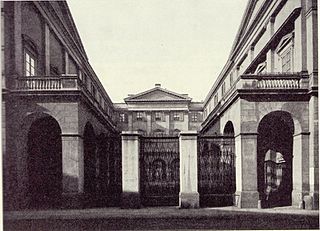
Palazzo Arese-Bethlen was a neoclassical palazzo in Milan situated on what is now via Monte di Pietà 11. It was destroyed in 1943 following the bombing of Milan in World War II.
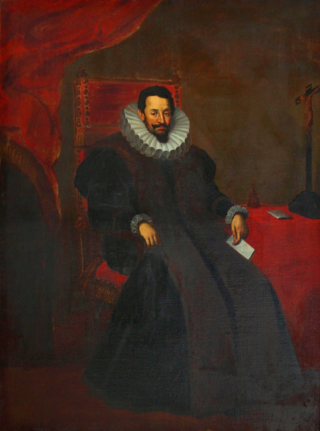
Giulio I Arese was a Milanese nobleman and politician, elected president of the Senate of Milan in 1619 under Phillip III.
{{cite book}}: CS1 maint: location missing publisher (link){{cite book}}: CS1 maint: location missing publisher (link){{cite book}}: CS1 maint: location missing publisher (link)